Surface Laptop 3, AMD vs. Intel: Don't buy the wrong one
Ouch, this is ugly
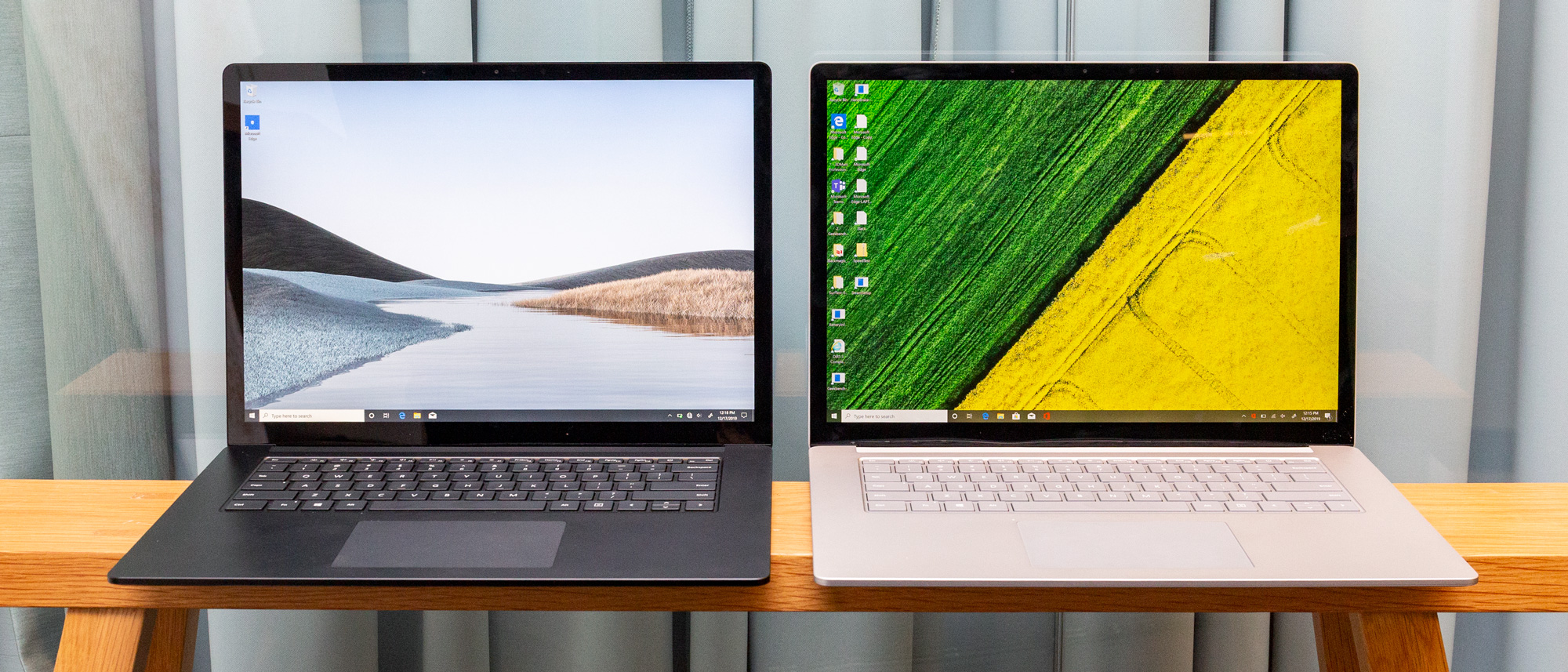
There are two versions of Microsoft's latest clamshell laptop, the Surface Laptop 3. You have an AMD-powered and a "Surface Laptop 3 for Business" model with Intel processors. Don't buy the Surface Laptop 3 until you know you're getting the right one.
While you couldn't tell these two apart from looking at them, there are some crucial differences that make one much better than the other. Here's the annoying part: The best model isn't the one you'll find at your local Best Buy. No, if you want the best Surface Laptop 3, we recommend ordering it straight from Microsoft.
Because these laptops have similar external components — the chassis, display, keyboard and speakers are all the same — we'll condense our normal face-off format and focus on the differences between the AMD and Intel versions of the Surface Laptop 3.
Microsoft Surface Laptop 3, AMD vs. Intel: Specs compared
| Header Cell - Column 0 | Surface Laptop 3 (AMD, 15-inch) | Surface Laptop 3 (Intel, 15-inch) |
|---|---|---|
| Price (as reviewed) | $999 ($1,399) | $1,299 ($1,599) |
| Display | 15-inch, 2256 x 1504 | 15-inch, 2256 x 1504 |
| CPU | AMD Ryzen 5 3580U | Intel Core i7-1065G7 |
| RAM | Up to 32GB | Up to 32GB |
| SSD | Up to 1TB | Up to 1TB |
| Ports | USB-C, USB 3.1 (Type-A), Surface Connect, headphone/mic jack | USB-C, USB 3.1 (Type-A), Surface Connect, headphone/mic jack |
| Battery Life (hrs:min) | 8:00 | 9:32 |
| Geekbench | 11,612 | 19,298 |
| Size | 13.4 x 9.6 x 0.6 inches | 13.4 x 9.6 x 0.6 inches |
| Weight | 3.4 pounds | 3.4 pounds |
Performance
We'll start with performance, because that's where you'll see the biggest gulf between these two Surface Laptop 3 versions. The bottom line is that the Intel model is faster by every measurement and crushed the AMD model in our benchmark tests.
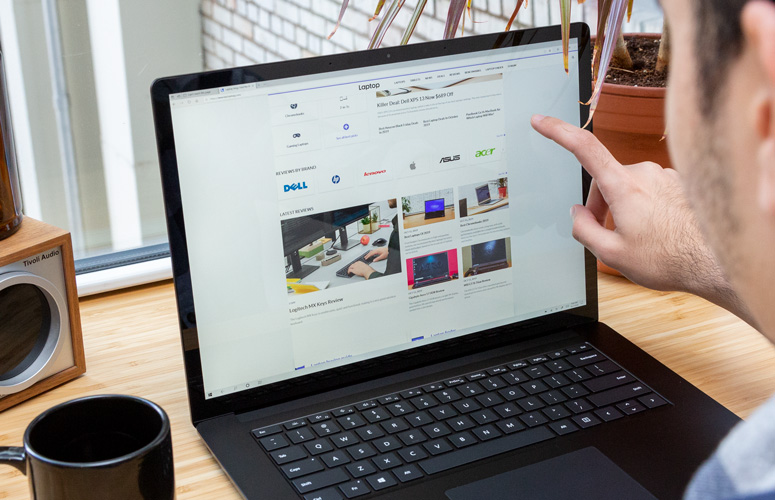
The Surface Laptop 3 for Business, equipped with an Intel Core i7-1065G7 processor and 16GB of RAM, scored a 19,298 on the Geekbench 4.3 overall performance test, much higher than the 11,612 scored by the Surface Laptop 3 with an AMD Ryzen 5 3580U CPU and 16GB of RAM. Only the Intel model topped the premium laptop average of 16,312.
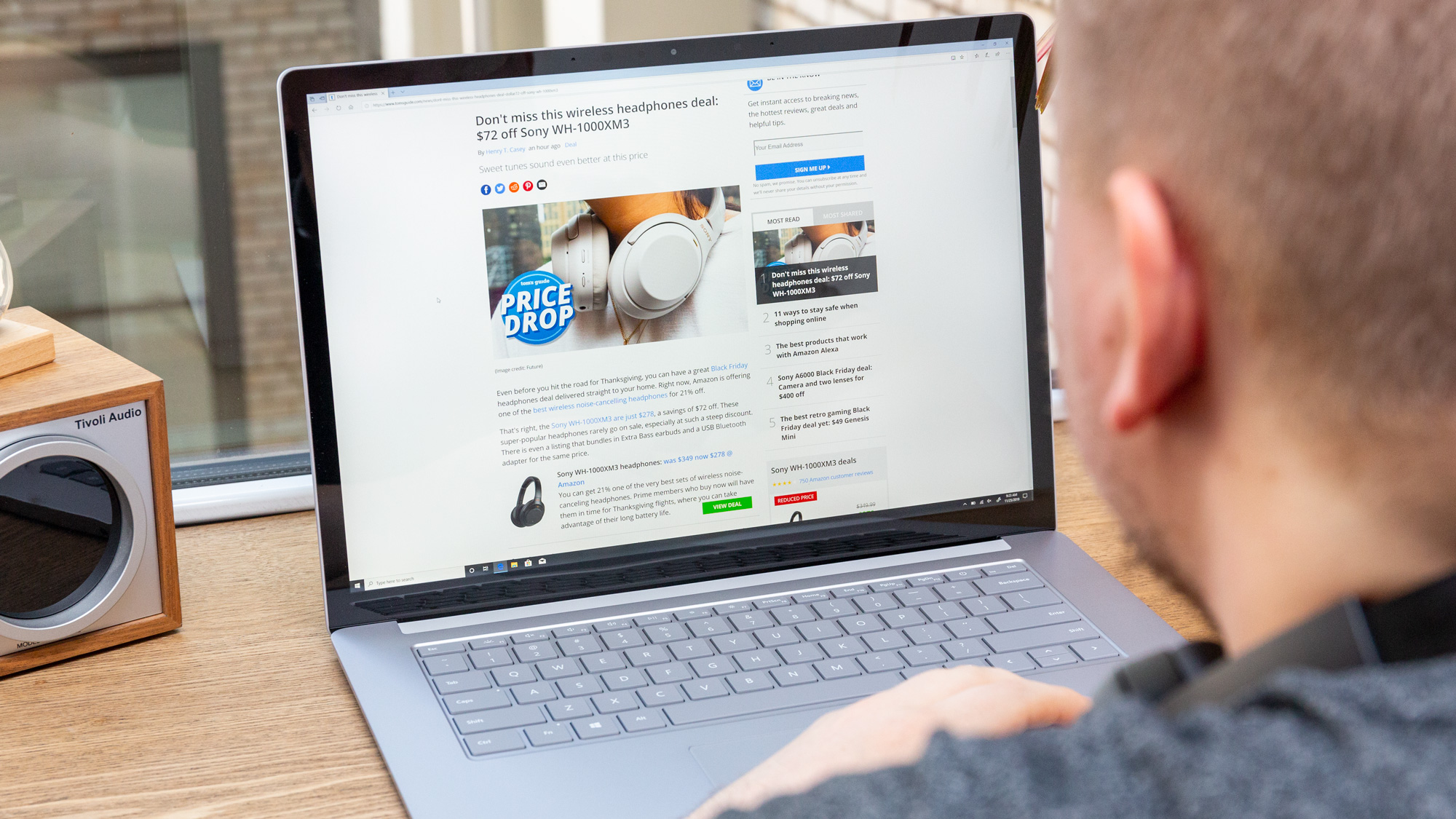
We could have predicted that result, but we were shocked to find that the Intel model also has a much faster hard drive. The Surface Laptop 3 for Business' 256GB M.2 PCIe SSD duplicated 4.97GB of multimedia data in 10 seconds at a transfer rate of 508.9 megabytes per second. That outpaces the 256GB M.2 PCIe SSD in the AMD model, which needed 18 seconds and reached only 282.7 MBps, well short of the 523.5-MBps category average.
Those speedier components mean the Intel model gets work done more quickly in the real world. The business model converted a 4K video to 1080p resolution in just 17 minutes and 18 seconds, whereas the AMD model needed 20 minutes and 33 seconds. Both of those times top the premium laptop average (21:04).
Stay in the know with Laptop Mag
Get our in-depth reviews, helpful tips, great deals, and the biggest news stories delivered to your inbox.
Winner: Surface Laptop 3 for Business (Intel)
Graphics
Going in, I expected the AMD version of the Surface Laptop 3 to dominate this round. Unfortunately for AMD, the new Iris Plus graphics in 10th Gen Ice Lake processors are a decent leap forward for integrated solutions.

The Intel Iris Plus graphics in the Surface Laptop 3 helped the laptop score a 112,670 on the 3DMark Ice Storm Unlimited graphics benchmark. That narrowly tops the Radeon Vega 9 integrated graphics in the AMD model (100,522) and the premium laptop average (96,787).

We saw similar results in real-world testing, with the business model running Dirt 3 at 61 frames per second, whereas the consumer AMD version lagged just behind at 56 fps. Those are both above our 30-fps playability threshold, but only the Intel model breached the 59-fps category average.
Winner: Surface Laptop 3 for Business (Intel)
Battery life
The Intel model isn't only faster than the AMD version but also lasts for 1.5 hours longer on a charge. The Surface Laptop 3 for Business endured for 9 hours and 32 minutes on our battery test, which involves continuous web surfing over Wi-Fi at 150 nits. The AMD model powered down after 8 hours flat.
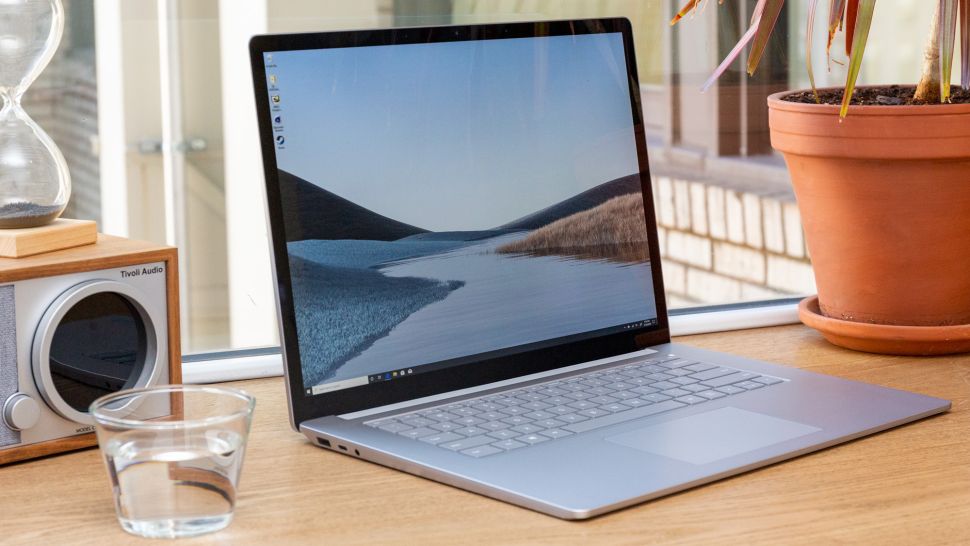
By choosing the Intel model over the AMD one, you'll be getting a laptop with longer battery life than the average premium laptop (8:42).
Winner: Surface Laptop 3 for Business (Intel, 15 inches)
Value and price
Microsoft markets the Surface Laptop 3 with AMD as a consumer laptop and sells it for a bit less than the business-focused Intel model.
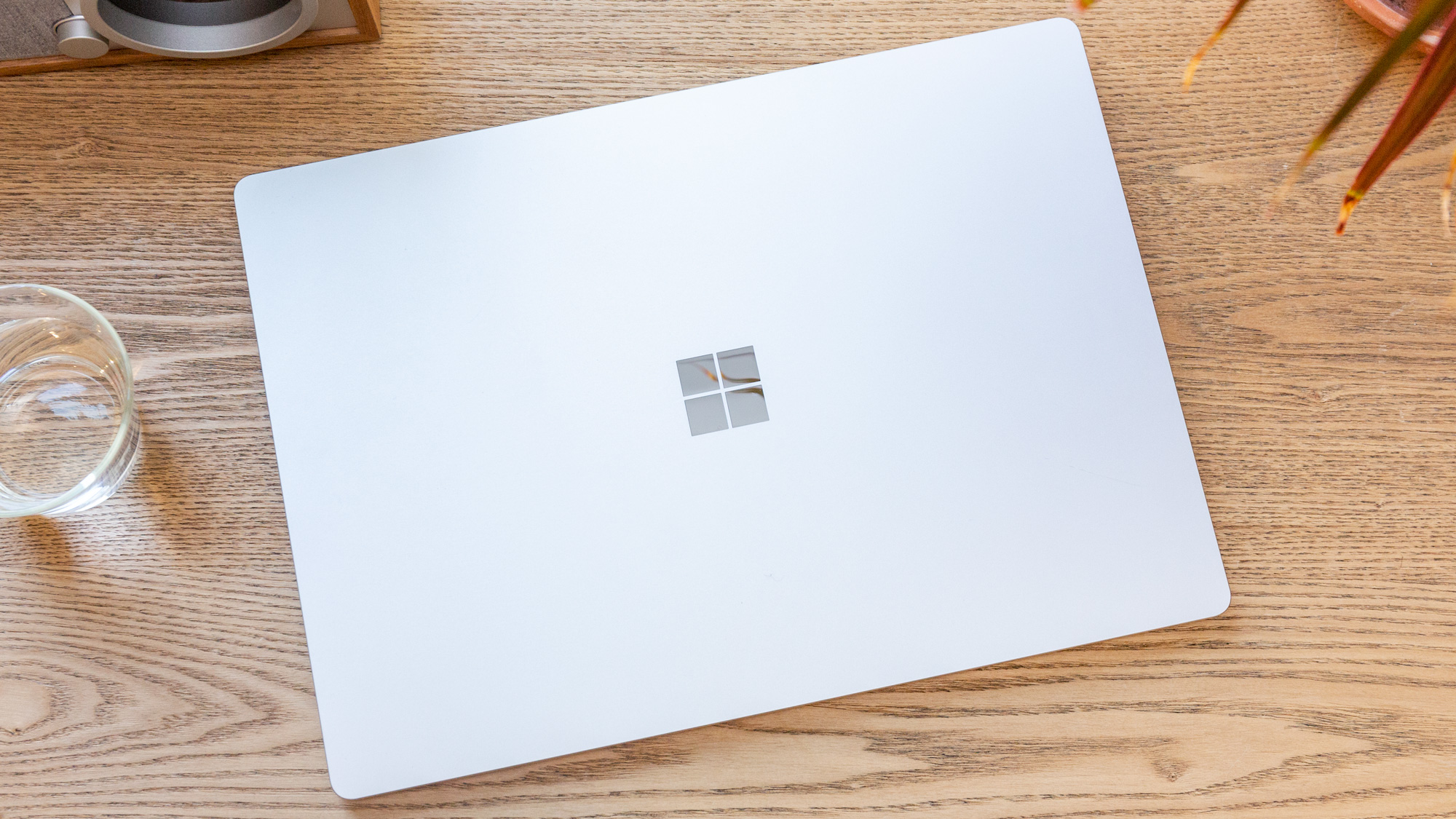
The base AMD model costs $999 (on sale for $200 off) and comes with a Ryzen 5 3580U CPU, 8GB of RAM and a 128GB SSD. For $200 more, you can upgrade to a 256GB SSD. Our review unit goes for $1,399 and packs a Ryzen 5 3580U CPU, 16GB of RAM and a 256GB SSD.
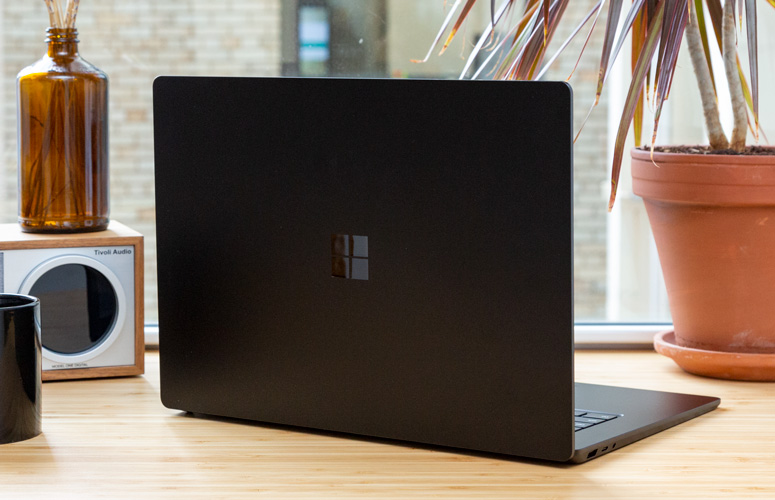
For more power, you can go with a Ryzen 7 model with 16GB of RAM and a 512GB SSD for $1,799 or go all out by spending $2,499 on a top-tier version with 32GB of RAM and a 1TB SSD. That beastly config is currently sold out.
For the 15-inch Intel model, you'll need to spend at least $1,299, or $300 more than the base AMD version. That lower-end SKU has a Core i5 CPU, 8GB of RAM and a 128GB SSD. Thanks to a $200 discount, upgrading storage to 256GB costs only $100 extra, an option we strongly recommend taking. The equivalent AMD config costs $200 less.
Our Core i7-equipped review unit goes for $1,599 and comes with 16GB of RAM and a 256GB SSD. Again, the AMD model is $200 cheaper. The price skyrockets a bit from there; you need to pay a borderline-egregious $400 extra to get to 512GB of storage. Jumping up to the top-tier model with 32GB of RAM and a 1TB SSD will cost you $2,699.
Winner: Surface Laptop 3 (AMD, 15 inches)
Other differences
Apart from what is mentioned above, these two laptops are almost identical, but there are a few additional differences.
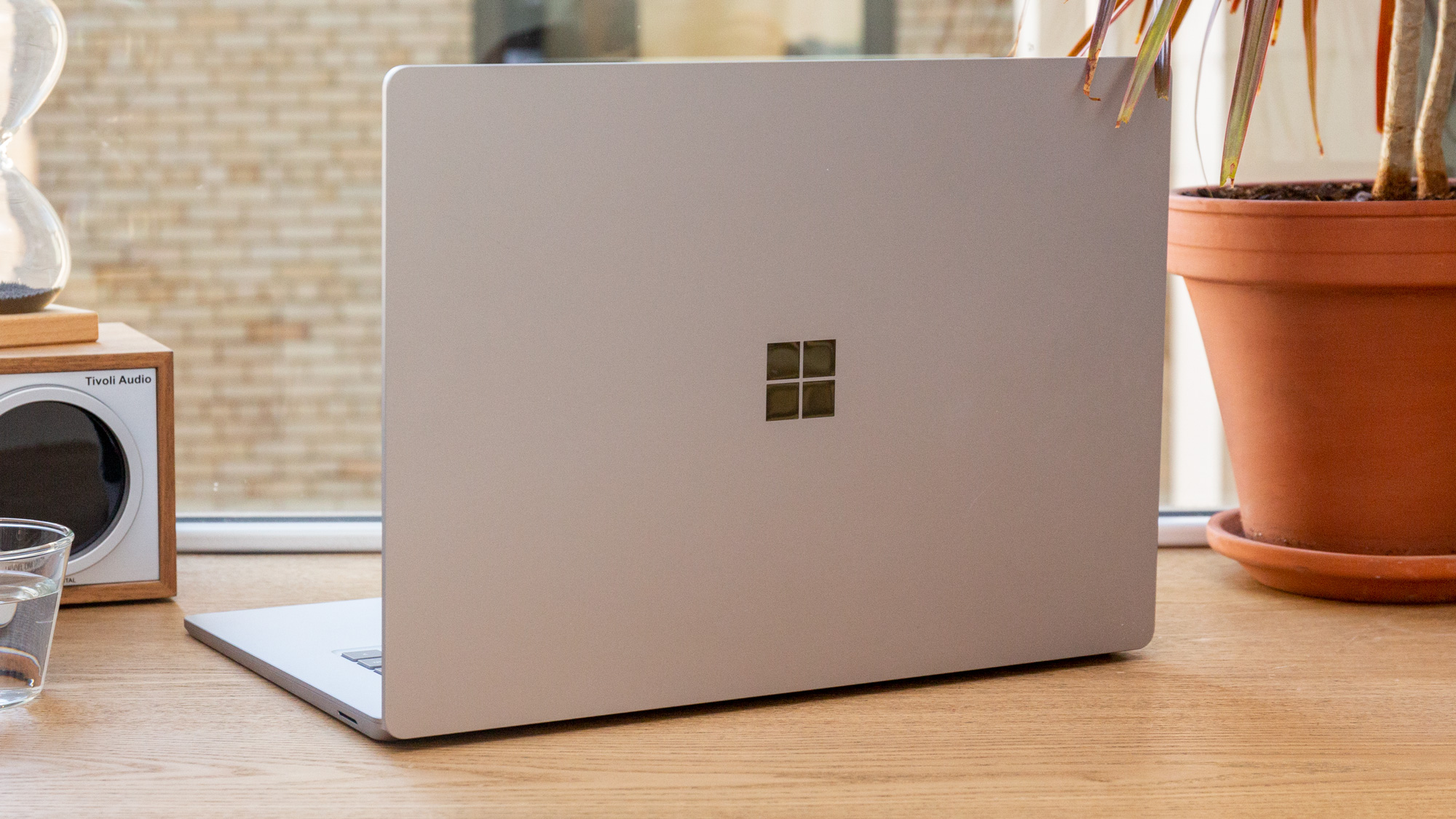
With the Intel version, you'll get a Wi-Fi card that supports Wi-Fi 6 (802.11ax), whereas the AMD version is stuck with Wi-Fi 5 (802.11ac). This won't make a difference to the majority of customers, but that could change when adoption for the new wireless standard catches on.
Another benefit of the Intel model is that it comes with Windows 10 Pro, not the Windows 10 Home on the AMD version.
Aesthetics matter, which is why your eyes might be deceived into grabbing the AMD model. That's because this inferior version is available in sandstone metal, cobalt blue with Alcantara, and all-Alcantara and all-metal versions of the platinum finish. Sadly, the buttoned-up (and bland) business model only comes in black and platinum.
Overall winner: Surface Laptop 3 (Intel, 15 inches)
This wasn't close at all. And that's really a shame, because Microsoft is selling the inferior of the two laptops at retail stores to everyday consumers. Yes, you can buy the Surface Laptop 3 with Intel chips directly from Microsoft's website, but not everyone will know to do that.
| Header Cell - Column 0 | Surface Laptop 3 (AMD) | Surface Laptop 3 (Intel) |
|---|---|---|
| Performance | Row 0 - Cell 1 | X |
| Graphics | Row 1 - Cell 1 | X |
| Battery Life | Row 2 - Cell 1 | X |
| Value | X | Row 3 - Cell 2 |
| Overall | Row 4 - Cell 1 | X |
The Surface Laptop 3 for Business is better than the AMD version in every important way but the price. The Intel processor offers significantly faster performance and better graphics than its AMD counterpart. You even get an extra 1.5 hours of battery life with the Intel version.
We think these benefits are worth paying a $200 or so premium for the Intel model rather than settling for the regular AMD version.
Phillip Tracy is the assistant managing editor at Laptop Mag where he reviews laptops, phones and other gadgets while covering the latest industry news. After graduating with a journalism degree from the University of Texas at Austin, Phillip became a tech reporter at the Daily Dot. There, he wrote reviews for a range of gadgets and covered everything from social media trends to cybersecurity. Prior to that, he wrote for RCR Wireless News covering 5G and IoT. When he's not tinkering with devices, you can find Phillip playing video games, reading, traveling or watching soccer.

